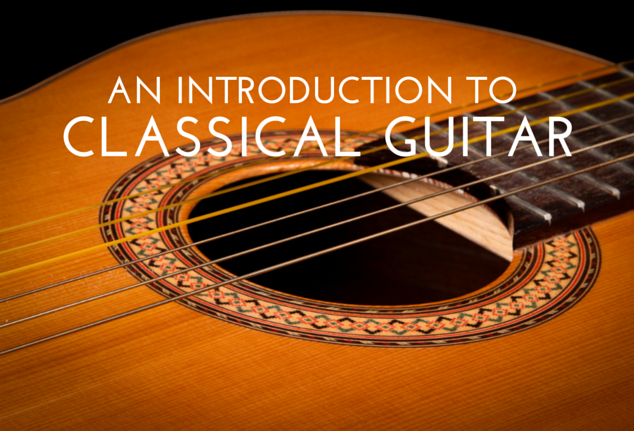
I love the guitar, and I love performing, teaching, and studying classical music.
In this post I want to share with you what it is about classical guitar that brings me such pleasure and how you might find it a new part of your musical journey.
I started out my relationship with the guitar by learning how to play basic fingerstyle songs and before too long I was trying to imitate the playing styles of Jimi Hendrix, Jimmy Page, Eddie Van Halen and Steve Vai. It was always the instrumental side of music that fascinated me, it provided a way to express myself solely through the guitar.
Around five years after picking up the guitar I was given a recording, a compilation of classical works by composer and players I had never heard of. Immediately I was struck by the attention to detail, the sound these players were getting out of their instruments and the intricate structure of the pieces themselves. Little did I know, but that was the beginning of a lifetime dedication to the classical guitar.
Flash forward to today and I have received a doctorate in music performance from Yale University, run a successful online education site at ClassicalGuitarCorner.com and I perform solo recitals, sharing the classical guitar and its repertoire around the world.
So what is it that is so great about the classical guitar?
Let’s have a look.
The Sound
On the classical guitar we use our right hand fingers to play individual notes and on the right hand we grow our nails out a little so that they make contact with the string (It is not completely necessary to grow out your nails, but it is more common than not for the technique). Everyone's nails and fingers are different and this means that no two classical guitarists will ever sound the same.
Part of the joy of studying classical guitar is to find your own sound, your own “voice” on the instrument. As you start down the path of classical technique you will find that experimentation is a huge part of sound development. Fingernail shape and texture, hand position, the way you approach the string, all of these things can affect your sound and it can be a fascinating journey to develop your own “voice” on the classical guitar.
The Repertoire
The word “classical” is really a bit of a misnomer. There definitely was a classical period of music that we access but the reality is that we draw from all periods of music from renaissance to modern day. Modern classical guitar repertoire draws heavily from Jazz, Folk, Improvised Music, Art Music and any number of national styles. For instance a very popular composer among classical guitarists is Astor Piazzolla and he only ever wrote tangos!
What you will find in the classical repertoire, apart from a huge diversity in material, is structure and composition. The majority of pieces are written by composers who may have not even played the guitar. What they did, however, was thoughtfully and skillfully construct pieces of music that were so good they stood the test of time over decades and even centuries. So, in a way, every time you play a piece from the repertoire you are collaborating with another musician through the score.
The beautiful thing about the great works from our repertoire is that they are often so incredible that you will continue to make discoveries years after starting a piece. It really becomes like a relationship.
For instance, I have been playing this Fugue by J.S. Bach for over ten years and I am still finding new things that surprise me:
The technique
Classical technique is perceived to be perhaps one of the most demanding out of any style.
I disagree.
Firstly, at the apex of any genre the level of “difficulty” is pretty much the same. I will agree that it might take a little longer to play a classical piece compared to a three chord song, but apart from the slower start I think it is comparable to other styles.
Besides, if you love what you are doing, the challenges become fun and the difficulties become goals to achieve.
Classical technique develops accuracy, finger independence and trains your hands to execute complex passages. All of this will directly benefit other styles of playing, especially acoustic fingerstyle guitar.
The notation
One aspect that many guitarists find daunting is learning standard notation after getting by with TAB. There are no shortcuts here, it is very much like learning a language, but the payoffs are huge.
Not only do you get access to a vast repertoire from many styles, you can arrange music from other instruments, you can understand what is actually going on in the music, you can compose pieces, you can join in with other musicians… the list goes on.
My favorite analogy is this: Knowing how to read standard notation is like visiting a foreign country and speaking the language. The trip would be possible without it, but when you know that language your experience is far, far more immersive.
So what’s next?
I would encourage you to search out some classical performances online, if what you find resonates with you, perhaps you will enjoy exploring the world of the classical guitar.
-Simon Powis

Dr. Simon Powis has performed around the world as a soloist and with orchestras. He holds a doctorate of music from Yale University and teaches classical guitar online at http://classicalguitarcorner.com